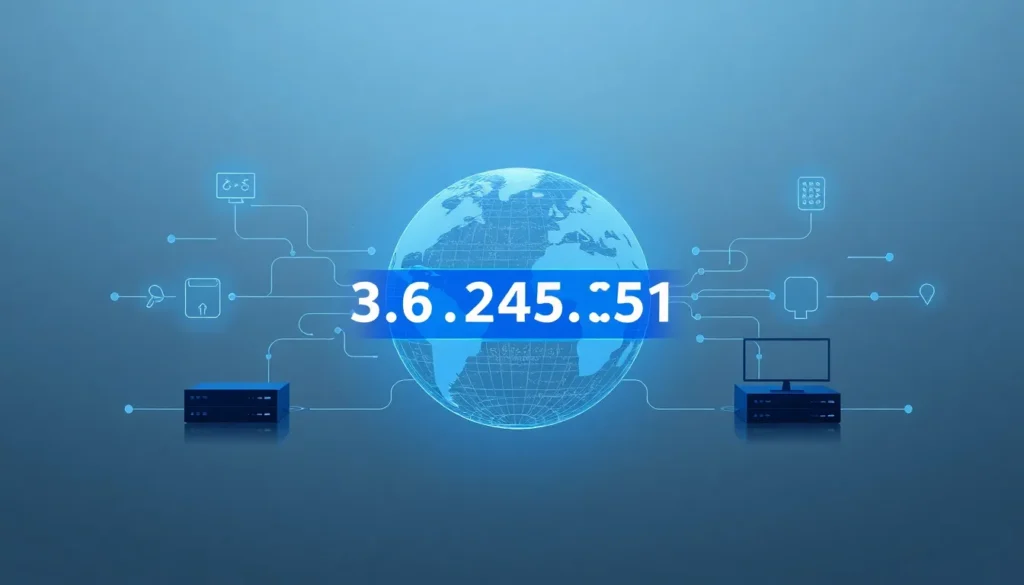Have you ever paused to ponder what makes the internet tick? Well, one of its fundamental building blocks is the IP address. Think of it as your internet’s home address, guiding data traffic to the right place. Jump into this article as we unravel the mysteries behind IP address 3.6.245.251, it’s more exciting than it sounds. Buckle up for a wild ride through the digital streets.
3.6.245.251

An Internet Protocol (IP) address is essentially a numerical label assigned to each device connected to a computer network that uses the Internet Protocol for communication. This label serves two main functions: identifying the host or network interface and providing the location of the device in the network. To put it simply, it’s like a phone number for your device, enabling it to connect and communicate.
Types of IP Addresses
There are primarily two types of IP addresses: IPv4 and IPv6. The IPv4 address is the most commonly used format, consisting of four sets of numbers ranging from 0 to 255, separated by dots. IPv6, on the other hand, is the newer version, developed to meet the need for more addresses as the number of internet-connected devices skyrockets. It features a more complex structure, utilizing eight groups of hexadecimal digits separated by colons.
Static vs. Dynamic IP Addresses
Static IP addresses remain constant, essentially acting as fixed addresses for devices. Dynamic IP addresses are temporary, assigned by a Dynamic Host Configuration Protocol (DHCP) server from a pool of addresses. This assignment changes occasionally, which can add a layer of security since it makes tracking the device more challenging.
Public vs. Private IP Addresses
Public IP addresses are assigned to your network by your Internet Service Provider (ISP) and can be accessed over the internet. Each one is unique across the entire internet, making it essential for data exchange. The main role of a public IP is to enable devices from around the world to find and communicate with your network.
In contrast, private IP addresses are used within a local network and aren’t routable over the internet. Devices on a home Wi-Fi network, for example, have private IP addresses to communicate with each other securely without exposing themselves to the outside world. Routers commonly assign these addresses, letting users manage their devices more effectively.
Geolocation of IP Address 3.6.245.251
Geolocation refers to the practice of determining the physical location of a device based on its IP address. For IP address 3.6.245.251, the geolocation data can offer valuable insights. While the exact location may not pinpoint a specific building, it will typically share the city or region.
Associated Organizations and Networks
The IP address 3.6.245.251 is primarily associated with organizations that manage networks in various regions. Understanding the hosting organization can provide additional context about the network’s purpose and its typical users. This information can be crucial for security professionals, marketers, and anyone conducting digital forensics.
Potential Uses of IP Address 3.6.245.251
Every IP address has potential uses, and 3.6.245.251 is no exception. Businesses may use it for server hosting, content delivery, or online services. Conversely, individual users might leverage it for accessing specific websites or engaging in digital transactions.
Also, this IP could potentially serve as a point of reference in analysis or troubleshooting. Network administrators might use such addresses to resolve connectivity problems or monitor for unusual activity in their systems.
Security Implications of Using Specific IP Addresses
Using specific IP addresses, like 3.6.245.251, can carry security implications. Bad actors can target networks based on their IP addresses. A malicious party may launch attacks or phishing schemes if they know the public IP. Also, organizations must consider their strategy for IP address management to prevent unauthorized access or data breaches. The importance of protecting one’s digital footprint cannot be understated in such a connected world.

